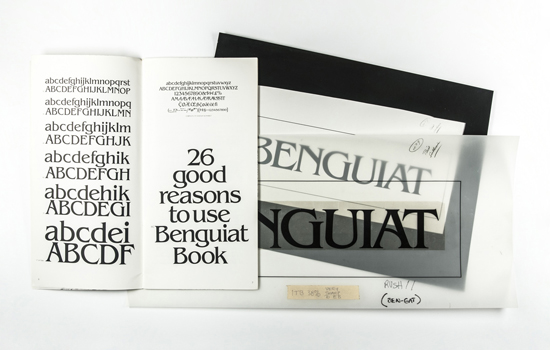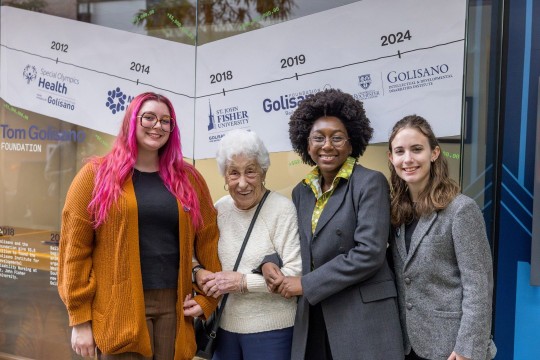Cary Collection acquires Ed Benguiat’s archive
Brooklyn-born designer created logotypes for ‘Esquire,’ Coke, Ford, ‘Reader’s Digest,’ ‘Playboy’
Blayke Mackenzie Morrow/Cary Graphic Arts Collection
Working films and the type specimen for “ITC Benguiat” typeface family, designed by Ed Benguiat. The Ed Benguiat Archive is housed in the Cary Graphic Design Archive at RIT’s Cary Graphic Arts Collection, and will be available for study in fall of 2016.
Typographer Edward Benguiat says when he visits Manhattan and sees the famous logo he created for The New York Times—spanning one-city-block-long across the entire building—“It’s a proud moment to know you’ve created one of the most recognizable mastheads in the world.”
The Brooklyn-raised Benguiat (born Ephram Edward Benguiat, Oct. 27, 1927), is also the father of such recognizable typefaces as Tiffany, Bookman, Edwardian Script, Caslon No. 225, and self-titled fonts Benguiat and Benguiat Gothic.
And now his legacy lives on as the “Edward Benguiat Archive” becomes the newest acquisition to join the Cary Graphic Design Archive, located in the Cary Graphic Arts Collection at Rochester Institute of Technology. Benguiat was honored previously at RIT when he was presented with the Frederic W. Goudy award for excellence in typography in 1990.
“The archive is a testament to Ed’s extraordinary achievements in lettering,” said Steven Galbraith, curator of the Cary Collection. “It’s a sampling from his expansive career as a designer of more than 600 typefaces, many created between 1970 and 1995.”
Benguiat says people don’t realize how time consuming the calligraphy process is, and more often than not, “You’ll never see the money for the hours you put into it,” he noted. “For example, it took me a year to complete the Edwardian Script—where I worked at least five hours a day, every day.”
“My favorite alphabet is one that no one uses or likes; it’s called Panache, a plain sans serif letter with thick and thins in it. And my least favorite is Comics Sans, the downright ugly and awkward font used in Snoopy that everyone seems to love.”
Benguiat was instrumental in the establishment of the International Typeface Corporation, a type foundry owned by Aaron Burns, the Lubalin Burns Corp., and Photo Lettering. His first project at ITC was designing the font Souvenir.
He believes typesetters have one thing in mind, to create a font that people enjoy using. “For me, I do not think of type as something that should be readable. It should be beautiful.”
In what some might consider a lost art, Benguiat used a pencil and pen—more than 50 years of drawing without a computer—to design or redesign logotypes for Playboy, Coke, Sports Illustrated, The San Diego Tribune, Estée Lauder, AT&T, McCall’s, Reader’s Digest and more. Included in the new archive are original drawings of typefaces for logos and letterheads the letter artist used in magazines and advertising projects, along with a T-Square ruler from his office workspace.
“As you study the material in his archive, you really can see Benguiat’s hands at work,” said Galbraith. “His sketches, proofs, and exacting touchups on his letterforms are invaluable teaching tools. They provide a behind-the-scenes look at the creative process of a very important and prolific designer.”
According to Galbraith, Benguiat had a triple crown career and excelled at all three: music, design and teaching. In his early years he was a prominent jazz drummer under the moniker “Eddie Benart,” playing in several bands with the likes of Stan Kenton and Woody Herman before concentrating his career on typography and teaching classes in graphic design and typography at the School of Visual Arts in his native New York.
“To now have his archives here at RIT is an honor,” said Galbraith. “The archive is a natural fit for the Cary Collection’s Graphic Design Archive (GDA), an archive of 42 contemporary designers working in the modernist traditions, including Benguiat’s colleague, Tom Carnase. Thanks to support from the Gladys Krieble Delmas Foundation, the Benguiat Archive will be accessible for students and scholars in the fall of 2016.”













